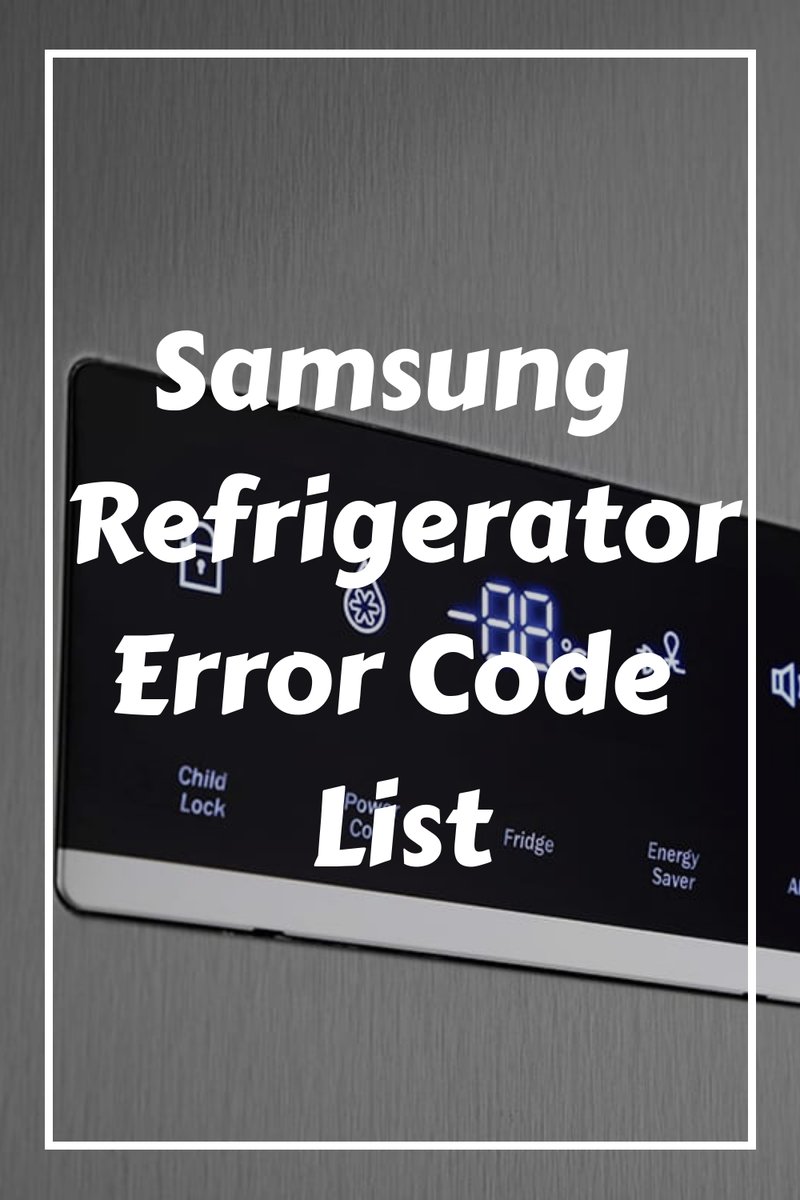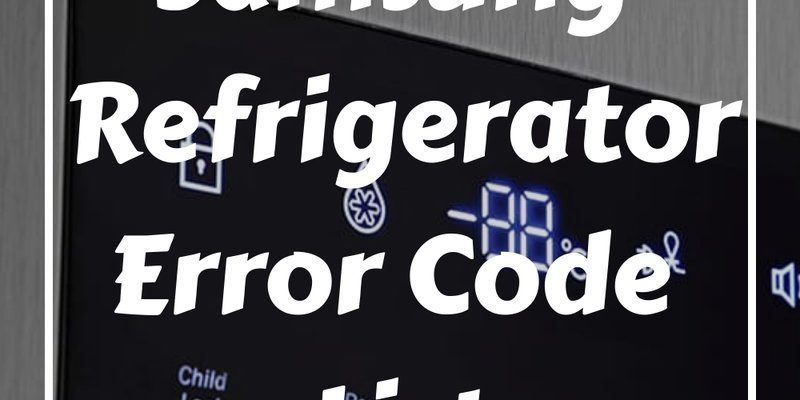
Samsung, a well-known name in home appliances, manufactures refrigerators that are generally reliable and efficient. However, even the best machines can encounter hiccups now and then. An F2 error code on your Samsung fridge isn’t just a random assortment of letters and numbers; it’s its way of telling you something’s off. Much like how a car’s dashboard lights up when the oil’s low, the F2 code is a signal that requires your attention. Don’t worry, though; understanding and addressing it can be simpler than you might think.
What Does the F2 Error Code Mean?
Let’s break it down. The F2 error code usually indicates an issue with the fridge’s evaporator fan motor. This component plays a critical role in the appliance’s cooling system. Think of it as a small but mighty fan working tirelessly to circulate air throughout the fridge. Without it, the cold air can’t reach all corners of your refrigerator, much as a blocked airway makes it hard to breathe.
When the F2 error pops up, it might mean the fan isn’t working properly. Perhaps it’s stuck, slowed down, or not spinning at all. You might notice your fridge isn’t as cold as it should be, or perhaps there’s frost buildup in the freezer. Picture this like a ceiling fan in your living room that’s stopped working — the air just doesn’t move as it should, right? Similarly, this error suggests your fridge needs a bit of attention to keep things running smoothly.
The good news is that this error doesn’t typically indicate an immediate danger. However, it does mean that your fridge isn’t operating at peak efficiency. Just as you wouldn’t ignore a warning light on your car dashboard, it’s best not to ignore the F2 error. Addressing it sooner rather than later can help prevent further issues and possibly extend your fridge’s lifespan.
Causes and Consequences of the F2 Error Code
You might be wondering, “What causes the F2 error?” There are a few potential culprits. Sometimes, it’s just a simple obstruction — like food packaging or ice that’s found its way into the fan’s path, stopping it from spinning freely. Other times, it could be a mechanical issue, such as a faulty motor or a worn-out fan blade. The fan might even be overworking due to a clogged air filter, much like how a vacuum cleaner struggles when the dustbin is full.
Ignoring the F2 error code can lead to bigger problems. Continued operation without fixing the issue could mean inadequate cooling, potentially spoiling food and wasting money. Imagine your fridge like a marathon runner. If you make them run with a sprained ankle, they’re likely to collapse before the finish line. Similarly, running your fridge with unresolved issues can strain its other components, leading to more extensive repairs down the line.
To avoid these headaches, it’s crucial to address the F2 error code promptly. Finding the root cause can often mean the difference between a quick fix and a costly repair. By resolving the issue, you can ensure that your fridge operates smoothly and efficiently, much like how a well-oiled machine hums along without a hitch.
Steps to Fix the F2 Error Code
Here’s the deal: fixing the F2 error can often be tackled at home, especially if you’re comfortable with a little DIY. First, make sure the power’s off before you start poking around — safety first! Check inside the fridge and freezer compartments for any visible blockages. Sometimes, simply moving an obstructing item is enough to get things working again, like freeing a tangled kite from a tree.
If the obstruction isn’t the issue, it may be time to inspect the fan motor itself. Accessing it might require some dismantling, but don’t worry; it’s akin to changing a light bulb — once you know how to do it, it’s pretty straightforward. If you find damage or wear on the fan blade or motor, you might need to replace the part. Fortunately, Samsung customer support or a local appliance repair service can guide you through finding the right parts.
Should troubleshooting at home not solve the problem, reaching out to a professional is a wise step. Professional technicians have the tools and expertise to diagnose and fix the problem efficiently. Just like calling a plumber for a stubborn leak, sometimes it’s best to let the experts handle it.
Preventing Future Errors and Keeping Your Fridge Running Smoothly
Prevention, as they say, is better than cure. To keep that F2 error at bay and your fridge running like a champ, regular maintenance is key. Keep the interior clean and organized to prevent blockages. Regularly check the air vents and filters, ensuring they’re free from dust and debris — a bit like giving your fridge a breath of fresh air.
Additionally, be mindful of how much you’re packing into the fridge. Overloading it can strain the cooling system, much like stuffing a suitcase to the brim makes it hard to zip up. Keep an eye out for unusual noises or changes in performance, as these are often your fridge’s way of communicating its needs.
Finally, always refer to the user manual for specific care instructions tailored to your model. It might seem a bit dry, but it’s filled with nuggets of useful information. By staying proactive, you can extend the life of your fridge and keep it running efficiently — saving you time, hassle, and potentially hefty repair bills in the long run.
